Suppose you are looking for a reason to visit Riga, the capital of Latvia. In that case, it is because the city boasts the largest and most impressive collection of Art Nouveau buildings in the world, with over 800 houses constructed in this style. The historical Centre of Riga, spanning more than 438 hectares, is designated as a UNESCO World Heritage Site due to its exceptional Art Nouveau (Jugendstil) architecture. According to Janis Krastins, an architecture professor, Riga is unique in that Art Nouveau can be found everywhere you look, unlike in cities like Brussels where only a few buildings are present. As a Latvian, I believe that my country is sometimes undervalued by its people. Through this photo essay, I hope to showcase the beauty of my beloved Riga and encourage others to appreciate its charm.
How it all started
The Art Nouveau era in Riga thrived alongside the city's flourishing economy in the early 20th century, a decade prior to the onset of the First World War. As one of the largest cities in the Russian empire at the time, Riga marked its 700th anniversary in 1901 with an exhibition showcasing industrial and handicraft works, including examples of Art Nouveau architecture. Following the exhibition, Art Nouveau became the predominant architectural style in Riga, as the city's construction industry boomed due to a nearly doubled population of 530,000 residents within 20 years. Building permits were swiftly approved and structures were typically completed within a year, resulting in over 100 new houses being built annually in Riga. Consequently, around 40% of the city centre's buildings were constructed in the Art Nouveau style during this period.
What is Art Nouveau by the way?
Art Nouveau was a movement that encompassed architecture, design, and visual arts and was popular in Europe between 1890 and 1910, particularly in countries like France, Belgium, Germany, and Austria. Its influence can still be seen across Europe and in parts of the US today. Art Nouveau architects aimed to create a modern style by using natural, organic forms and decorative motifs instead of traditional elements. This style, known for its ornamental features, plant and animal motifs, geometric and curved shapes, and round windows, goes by different names in various countries such as Jugendstil in Germany and modernismo in Spain. In Riga, notable Art Nouveau architects include Mikhail Eisenstein, Konstantin Peksen, Eizen Laube, and Reinhold Smeling.
The most impressive Art Nouveau buildings in Riga
Art Nouveau buildings can be found throughout the center of Riga, with a particular district standing out for its intricately restored and beautiful examples of this architectural style. For a glimpse of some of the most impressive Art Nouveau buildings in the city, a ten-minute walk from the old town to the intersection of Strelnieku and Elizabetes Street is recommended. Let’s first explore house on
Strelnieku iela 4a
It was built in 1905 as a private school. In the late 20th century, it underwent a complete facelift and is now home to the Riga campus of the Stockholm School of Economics. Architect Mikhail Eisenstein’s full focus was on the outside of buildings – his imagination was flying wild and here you can see a great example of this.
Then turn right to Alberta Street, a real Art Nouveau gem. Each of the houses on these few hundred meters is a unique 20th-century construction achievement and was built in quite a short time - from 1901 to 1908. Eight houses on Alberta Street are recognized as National Architectural monuments.
Alberta iela 13
Next to the house at Strelnieku 4a is the Alberta Street 13 building (1905), also a creation of Mikhail Eisenstein. State Counsellor A.Lebedinsky built this dwelling house. The facade of the building is a real masterpiece of art nouveau sculptural ornaments. The architect's creative imagination had no limit.
Alberta iela 2a
The building at Alberta Street 2a was built in 1906 for Rotmistr V.Boguslovsky, and designed by Mikhail Eisenstein. The façade of the building is richly decorated and even has an extra decorative top floor. You can watch the sky through its glassless windows.
Alberta iela 4
This building of 1904 is another one built for State Counsellor A.Lebedinsky and designed by Mikhail Eisenstein. The design recreates the style of tenements in Germany where representative premises are located on the street side but bedrooms and servants' apartments are located on the yard side.
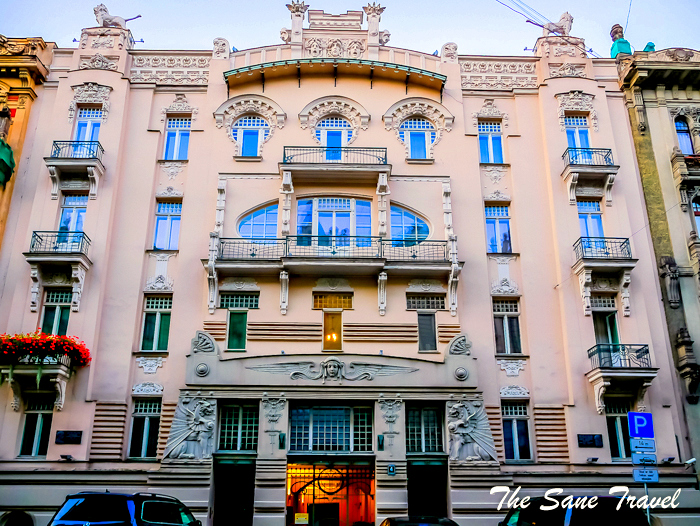
Alberta iela 8
Leo Pole's rental house designed by Mikhail Eisenstein is a striking example of eclectic art nouveau architecture, featuring rich decorative elements on its facades. The most opulent feature of the building is the central rhizalite, resembling a tree with a lion's head at the top, symbolizing strength and grandeur. The facade is a combination of blue brick and light plaster, creating a visually appealing aesthetic.
Antonijas iela 8
Alberta Street ends facing Antonijas Street where you notice a building designed in 1903 by yet another great architect of the period, Konstantins Peksens (Konstantīns Pēkšēns). The accent of the elegant facade is the entrance decorated with figures of winged dragons. I liked them so much that I bought two small copies of them in the Art Noveau shop on Strelnieku Street nearby and placed them at the entrance of my apartment. There is a belief that they guard the owner and bring wealth to him or her.
Elizabetes iela 10b
Perhaps the city's most popular single Art Nouveau building stands at number 10b Elizabetes iela. The six-story house has been fully restored, boasting bright colours and its original ornaments. Designed by Mikhail Eisenstein and built in 1903, the Amphora building on Elizabetes iela is a fine example of art nouveau with floral motifs, stained glass, sky-blue tiles, sculpted knockers, peacocks, and stern female faces peering out of the top floor.
Elizabetes iela 33
This building (1901), with its richly decorated façade and a recognizable from far away form, is the first attempt of Mikhail Eisenstein to use Art Nouveau motives.
Elizabetes iela 23
This house was built in 1903 by architect Herman Hilbig. The elegant façade design was made according to the sketches of Berlin architect Albert Giseke. The details of the entrance decoration are well-preserved. The building was reconstructed for the needs of Aizkraukle Bank in 2004.
OK, we are back at the starting point of our walk and it took about half an hour. I hope you now feel you're an expert of Latvian Art Nouveau style. Are you? What's your favorite Art Nouveau style building anywhere? Share your thoughts in the comments section.
Like it? Pin it!
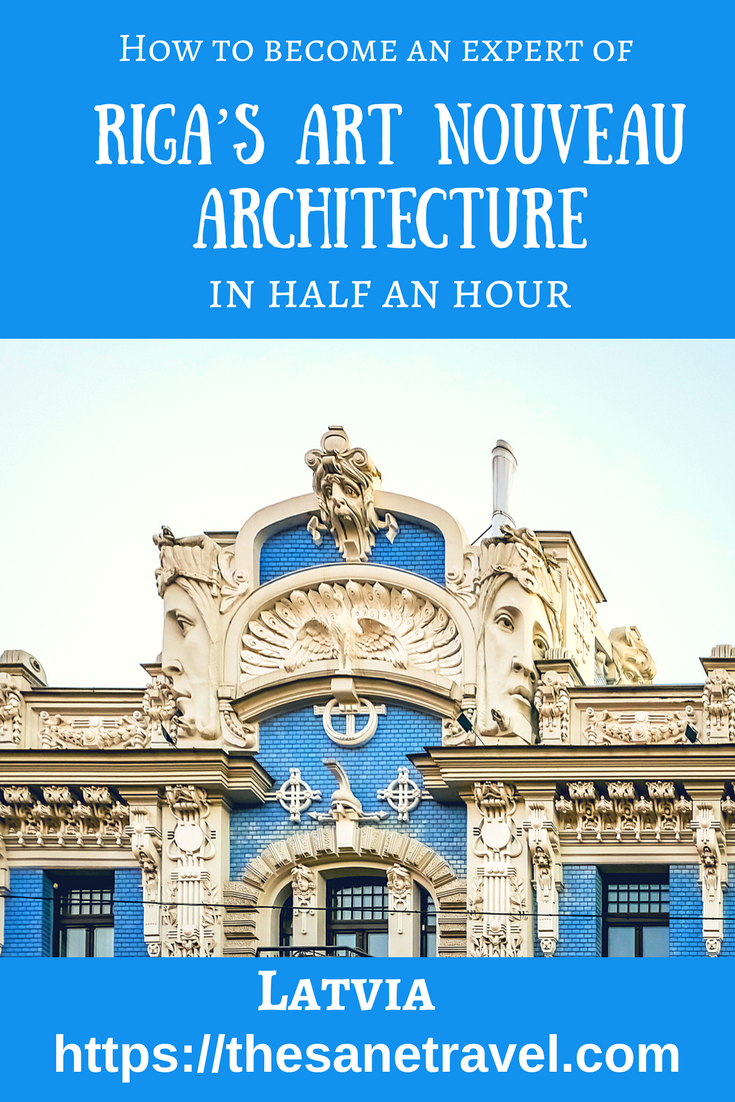
- Updated by Anita in April 14, 2024
Author: Anita Sane

About the author
Anita is a part-time traveller, passionate photographer and a retired career woman from Latvia, travelling mostly solo for more than 15 years. She is a skilled travel planner who plans and executes her travels by herself. Anita wants to show you how to travel the world and open your mind to new experiences. Follow her on Facebook, Instagram, Pinterest, Twitter and Bloglovin.

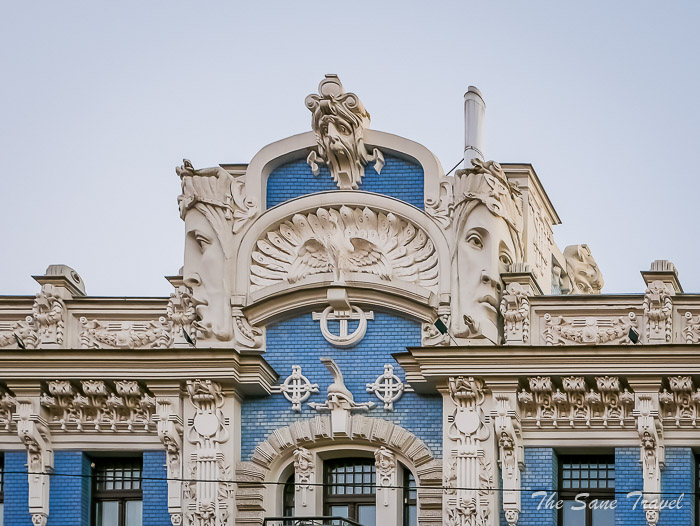
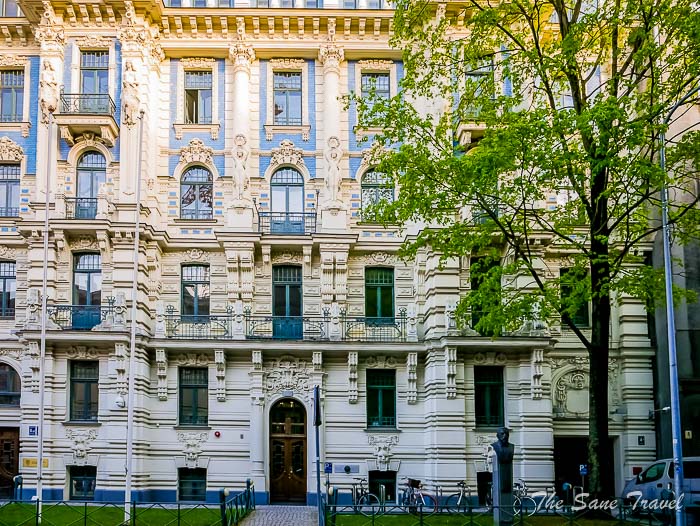
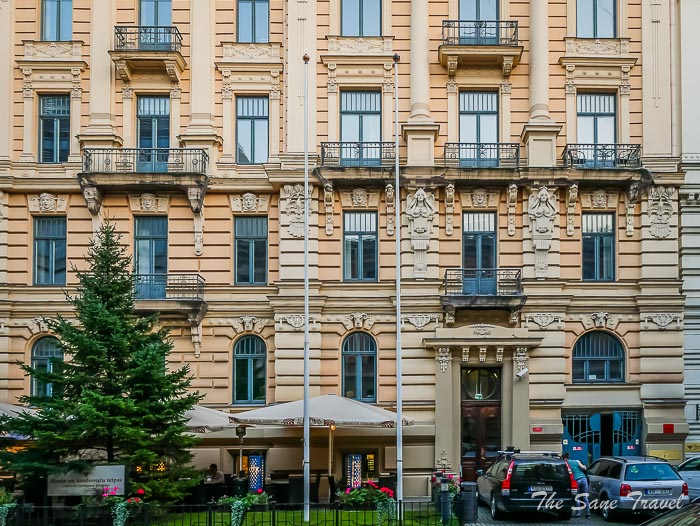
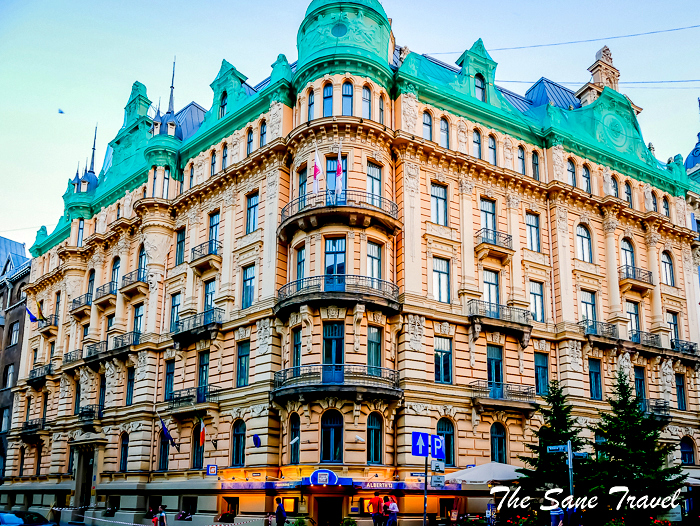
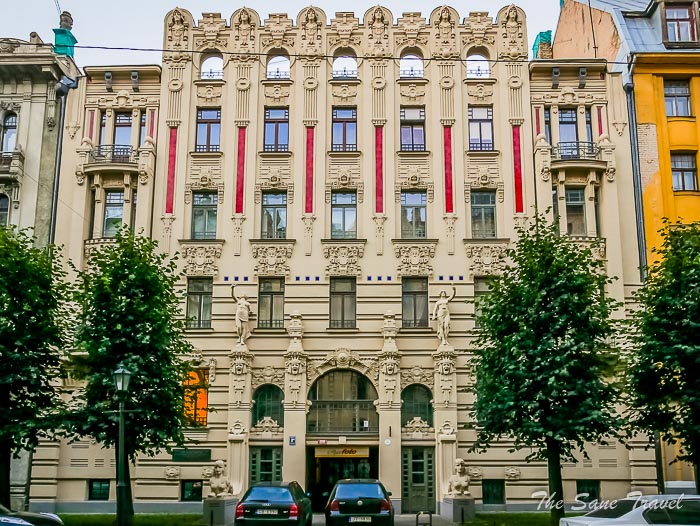
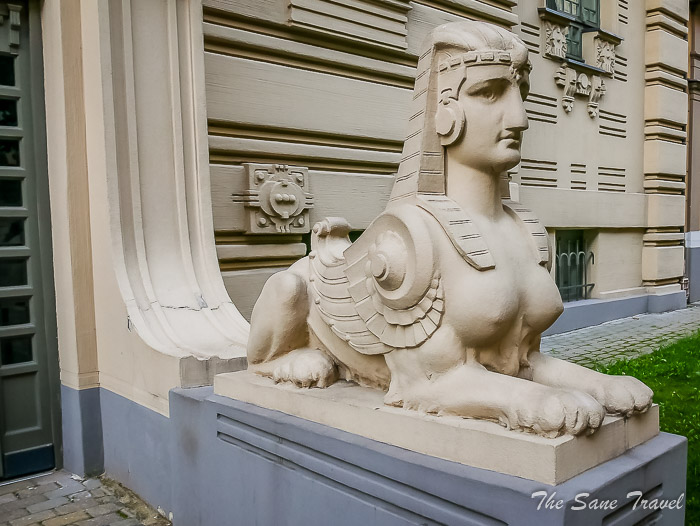
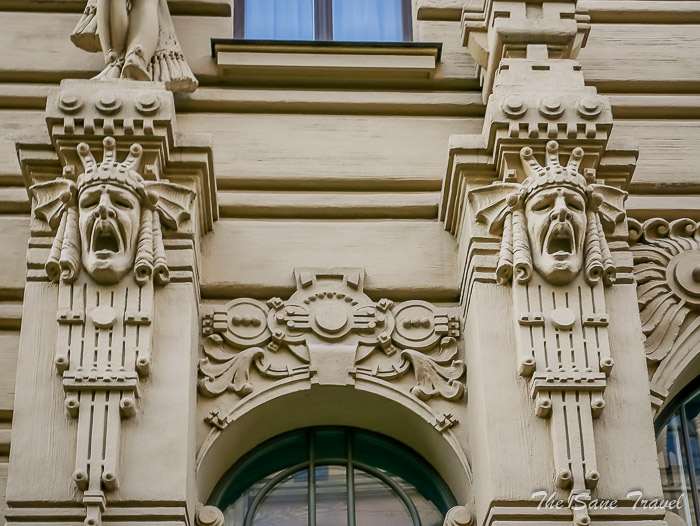
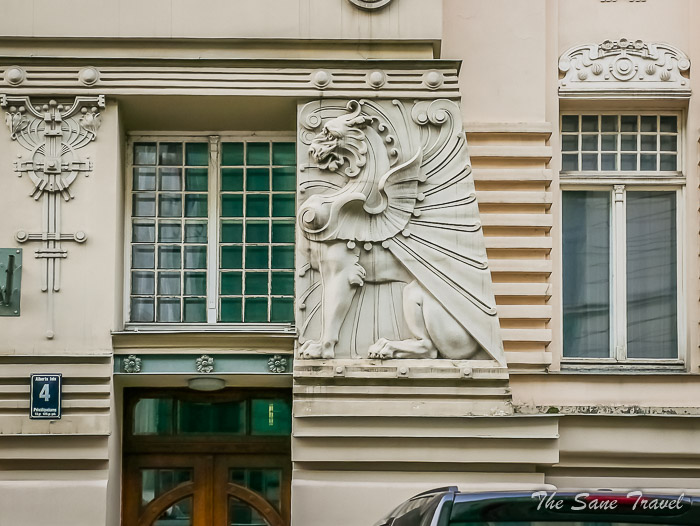
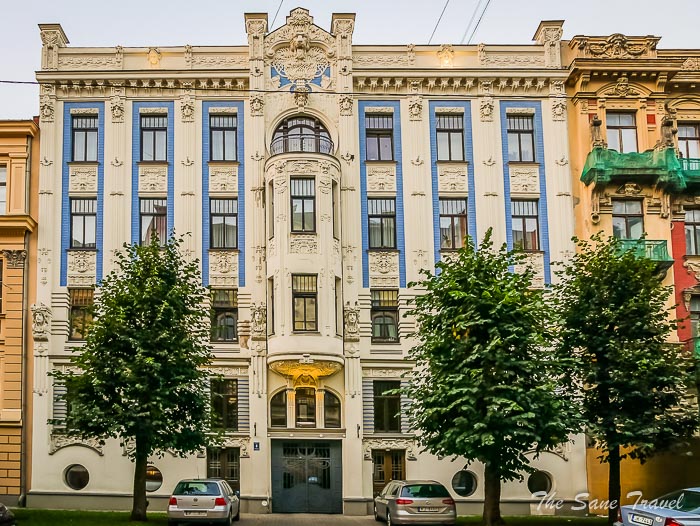

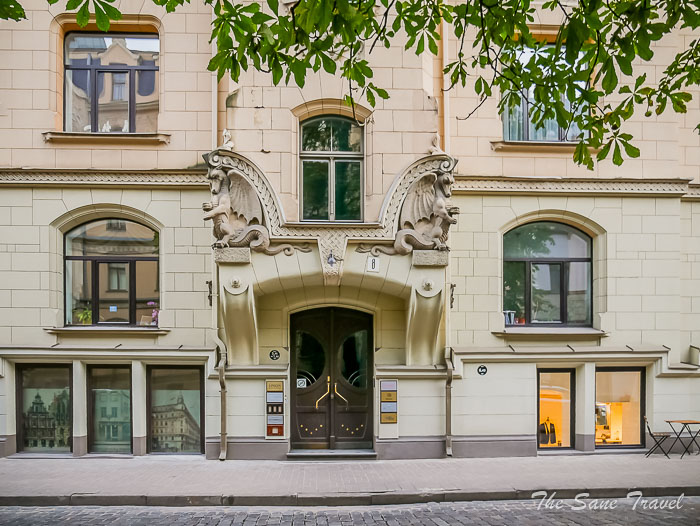
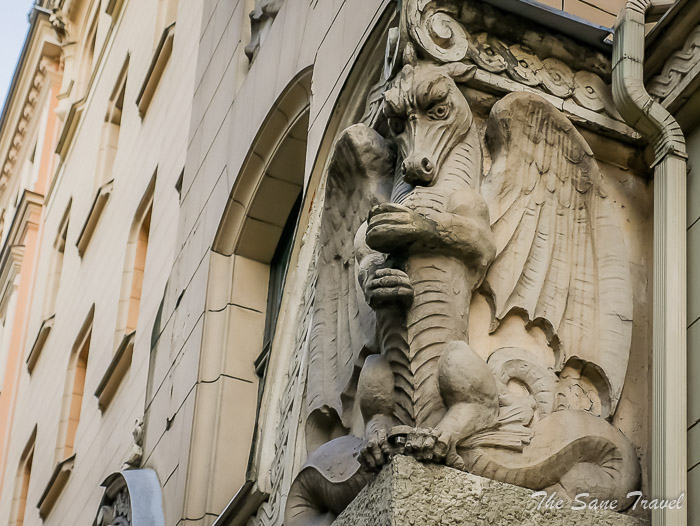
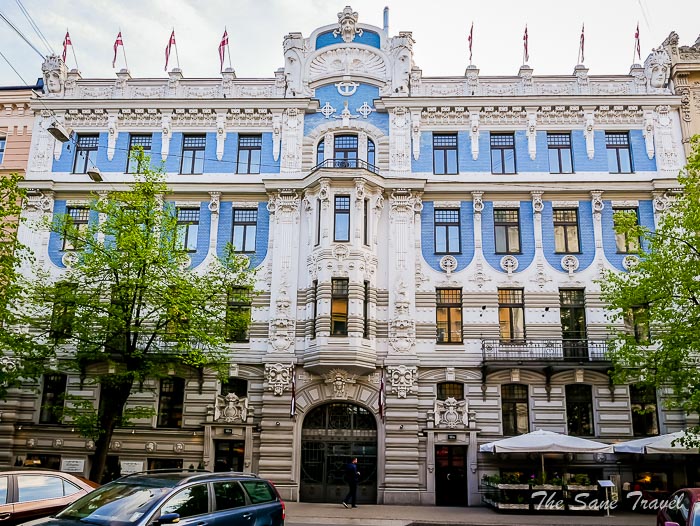
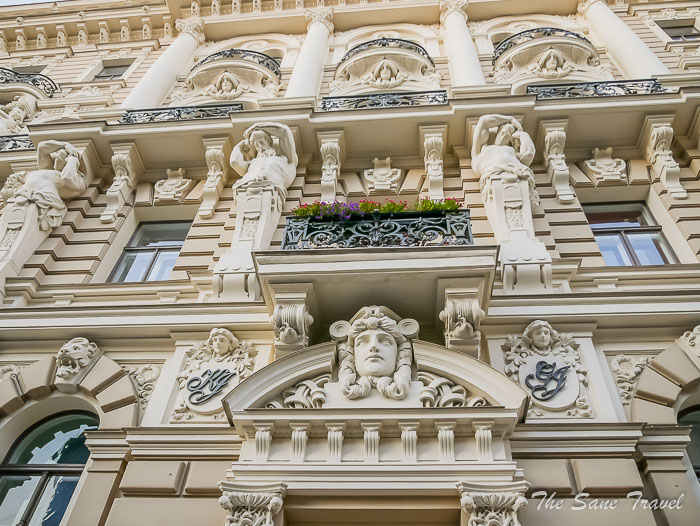
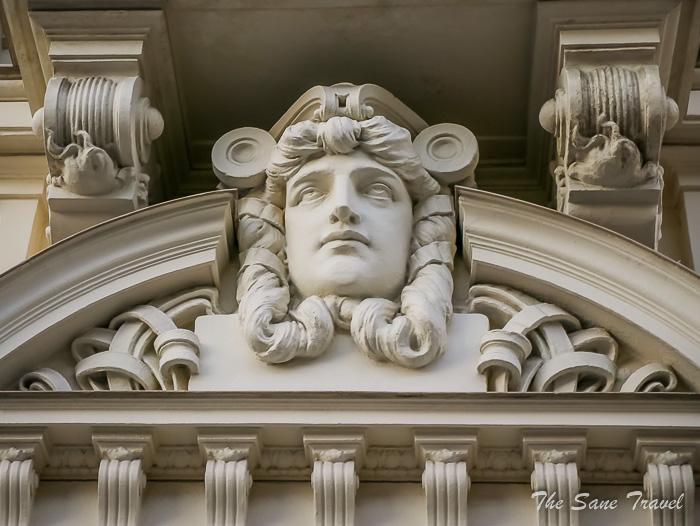

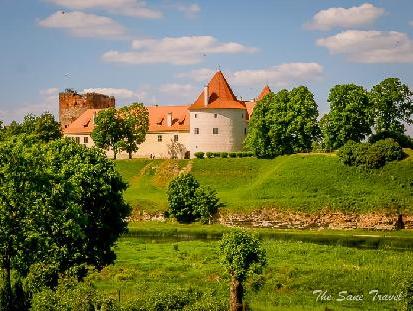
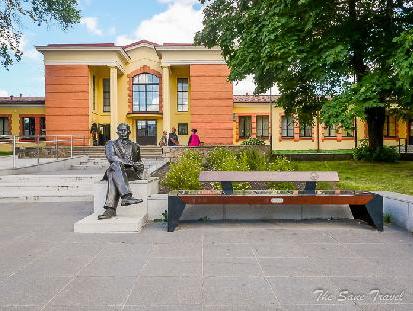
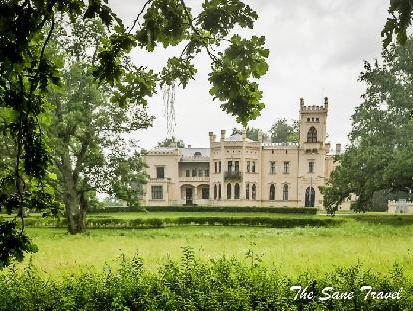
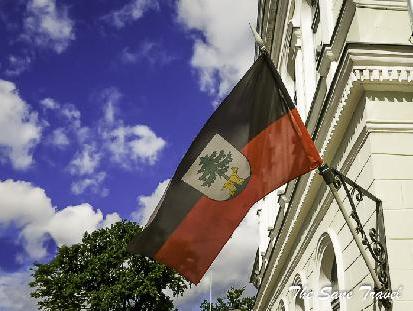
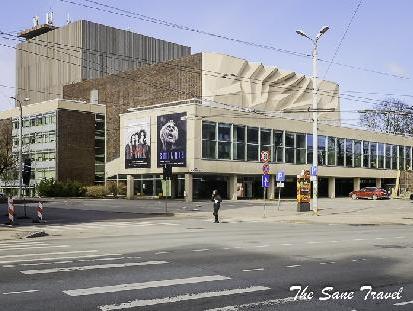
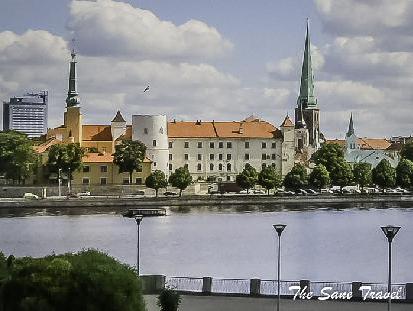
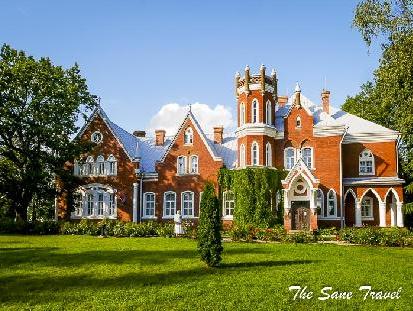
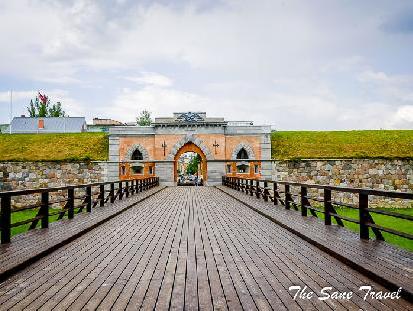
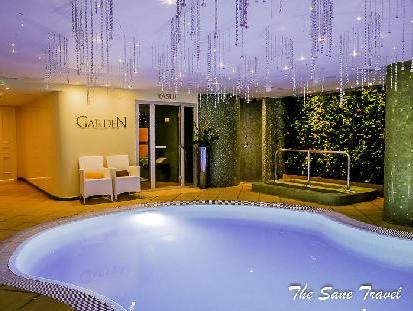
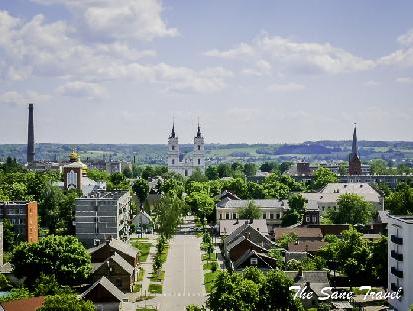
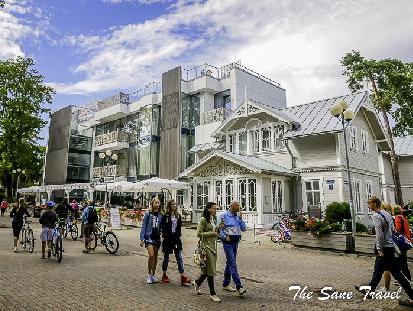
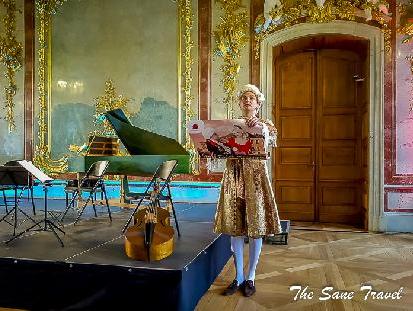
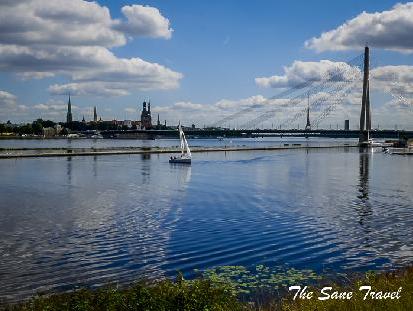
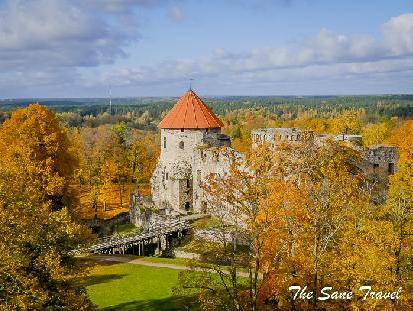
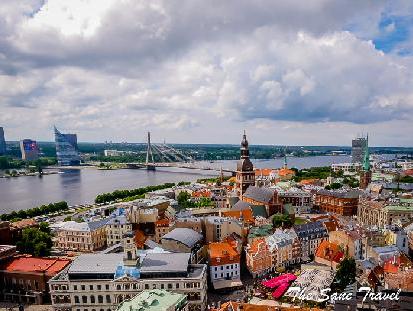
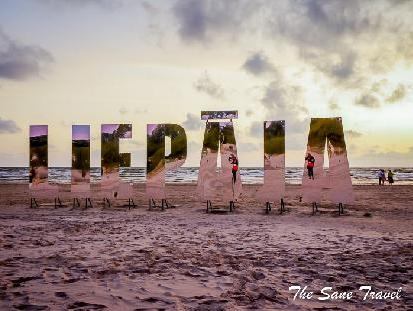
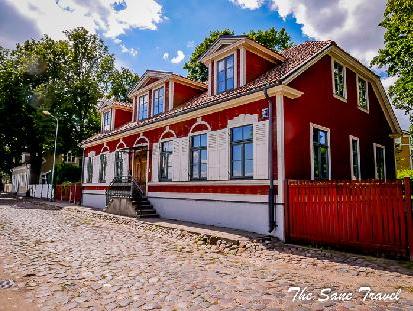
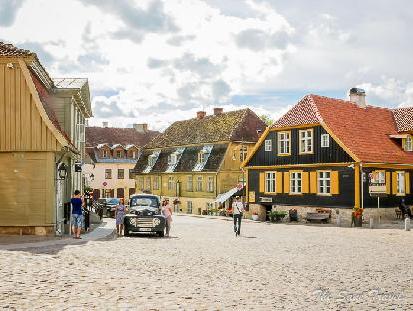
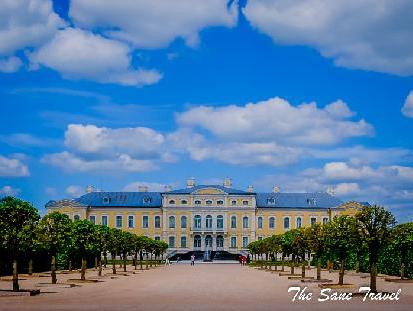
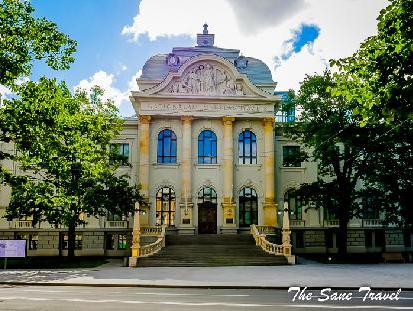
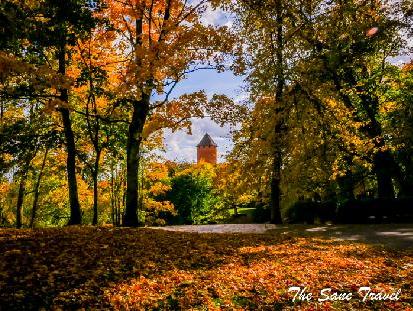
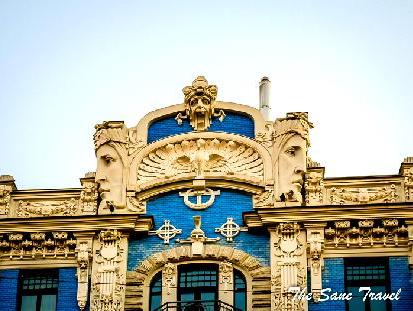
Report
My comments